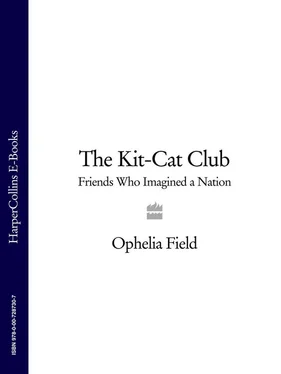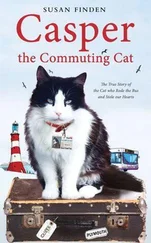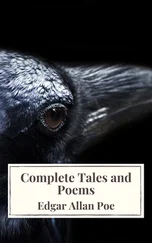Another of the Kit-Cat Club's new military members after 1702 was James, future 3rd Earl of Berkeley, a naval officer admitted on the same day as Mohun. Richard Boyle, 2nd Viscount Shannon, also joined the Club soon after leading the grenadiers who stormed the fortifications at Vigo with Stanhope in October 1702. 21 Two soldier brothers, John and James Dormer, may also have entered the Club, simultaneously or in succession, soon after the war began. A ‘Mr Dormer’ is recorded as dining at Wharton's house on Dover Street, alongside four other Kit-Cat members, on 5 December 1702, and again with three Kit-Cats on 27 December. 22
The only military Kit-Cat whose membership certainly predated 1702 was Colonel John Tidcomb, a Restoration Court pal of Dorset's who had led deserting troops towards William's invasion force in 1688 and was now enjoying the Club in his retirement. Tidcomb and Dorset provided the prototypes for the admission of Kit-Cat soldiers who possessed enough cultural refinement that their conversation did not, as Addison put it, ‘smell of gunpowder’. 23
Thanks to the additional military members who joined during 1702 and 1703, the Kit-Cat Club needed to move to a more spacious venue: likely the Fountain tavern on the Strand. Whig conspirators had clubbed in this tavern before the Revolution and this subversive history now held added appeal for the Kit-Cats as they entered an indefinite phase of political opposition to another Tory-leaning Stuart monarch. Some sources state that Mr Cat sold the Cat and Fiddle to buy the Fountain with a loan from Tonson, just as Cat moved his home and shop from Gray's Inn down to Shire Lane, a street that ran through the middle of where the Royal Courts of Justice stand today.
In addition, for summer gatherings, the Kit-Cat Club planned to erect some sort of clubhouse, referred to as a ‘convenient reception’, in the fresher air of Hampstead. The village of Hampstead was then visited mainly for its proximity to the Bellsise (today Belsize) Gardens—pleasure gardens like those in Kilburn, Vauxhall and St Pancras where Londoners could enjoy music, dancing, gambling and sex amid the shrubbery. The original proposal for the Hampstead venue in May 1702 was signed by fourteen members of the Club who each promised to contribute ten guineas (each guinea was worth 20–30 shillings or £130 to £200 today), with Wharton listed as ‘Controller of the Society’. 24 The building was to be finished by the spring of 1703, but it may be that it was never begun. Though a 1708 poem does refer to the Kit-Cats dining on Hampstead's ‘airy Head’ in the summertime, 25 no clubhouse has ever been identified there, and there is an oral tradition that they met in the gardens of the Upper Flask tavern, known for its ‘races, raffles and private marriages’, rather than in any purpose-built venue. 26
When in power, the Kit-Cats always imagined themselves in terms of heroic, patriot governors, modelled on classical Roman senators—men whose friendship formed the pillars of civilization—but when out of power, Renaissance and humanist models came to the fore, and they imagined themselves a private circle in retreat from a repressive state. During these first years of Anne's reign, when all the Kit-Cats but Somerset had been unceremoniously ejected from the Queen's Cabinet, but when the country was embarking on a war most intensely desired and bankrolled by their party, the Kit-Cats were ambivalent about which image to cultivate: the Fountain politicians or the Flask revellers.
VIII KIT-CAT CONNOISSEURS
If eating or drinking be natural, herding is so too.
3RD EARL OF SHAFTESBURY, Characteristicks of Men, Manners, Opinions, Times (1711) 1
IN EARLY 1703, Tonson acquired another summer home for the nomadic Kit-Cats. He leased a country house at Barn Elms, about seven miles west of London on the south side of the Thames, just west of Putney. The surrounding area was a picnic resort for Londoners, mentioned by Pepys as a place for strolls among the majestic elms and by Congreve as one of dubious morals. It was best reached by barge from Whitehall, rather than by the road (the original King's Road) that ran through the open country of ‘five fields’ and was notoriously plagued by highwaymen.
Elizabeth I had once stayed at Barn Elms' manor house. Tonson's property was a much more modest residence to the north of the manor, possibly its dairy. Taking the lease was nonetheless an expression of Tonson's social aspirations. The westerly migration from the stink of London into fresher air represented both his own and the Club's rising status since the 1690s. The proliferating villas of Twickenham and Clapham would soon become a clichéd image of new money's encroachment, as Whig ‘Cits’ (City citizens) imitated the rural idyll of the landed gentry but within commuting distance of the town. Like them, Tonson wanted to live within easy reach of London, but this Barn Elms property was unusual in being a status symbol not only for a private individual but also for a collective group.
Tonson may have been allowed to use the unspent Kit-Cat subscription monies, collected to build a Hampstead venue, to renovate the Barn Elms house instead. He hired Vanbrugh to fit up the house's interior. Like Vanbrugh's ‘Goose Pie’ house in Whitehall, Tonson's small property was good practice for the self-taught architect before working at Castle Howard, though in the latter case Vanbrugh would largely leave Hawksmoor to design the interior. Both houses, small and large, reflected their owners' desires to be judged more on how they spent their money than on how much money they had—in Tonson's case because he had more than was considered decent for an untitled merchant, and in Carlisle's case because he had less than his title suggested. As with membership of the Kit-Cat Club, the fad for architecture and interior design, and thereby the demonstration of one's taste, was a way to set oneself apart from an ever-increasing number of prosperous but perhaps less educated neighbours. A diverse range of luxury furnishings available at this date—thanks to the East India Company's imports of cotton, chintz and porcelain, for example—made it as easy for Tonson as for Carlisle to participate. As Defoe wrote when he saw a tradesman's house filled with velvet hangings, embroidered chairs and damask curtains, it was now common for such a man to own ‘Furniture equal to what, formerly, sufficed the greatest of our Nobility’. 2
The first time Tonson took Vanbrugh down to Barnes to survey the property, the men shared a simple supper in the kitchen, which Vanbrugh would remember fondly some twenty years later as ‘the best meal I ever ate’. 3 Tonson thus became Vanbrugh's second architectural patron, after Carlisle. By this date Tonson and Vanbrugh were also close personal friends. Tonson allocated a bedroom for Vanbrugh's permanent private use at Barn Elms, and a poem by a mutual friend contained a fictionalized dialogue in which the character of Tonson says of Vanbrugh: ‘…so much I dote on him, that I / If I were sure to go to Heaven, would die’. 4
Tonson convened the Club in London in March 1703, telling the members it would be the last meeting for some time, as he would be travelling to Holland on book business. Stepney, who was in Vienna cajoling Emperor Leopold into devoting greater military resources to the Grand Alliance, sent his ‘hearty affections to the Kit-Cat; I often wish it were my fortune to make one with you at 3 in the morning’. 5 This March 1703 meeting seems to have been a particularly late and lively one. A dangerously indecent poem by an unidentified Kit-Cat was recited, mocking Queen Anne for her phantom pregnancies. In the poem, Anne knights her doctor with her bare, gouty leg, in a fit of pleasure when he declares her pregnant. It is a nasty piece, reflecting the Junto Whigs' disgruntlement, out of office thanks to what they considered a woman's ignorant and irrational prejudices.
Читать дальше












